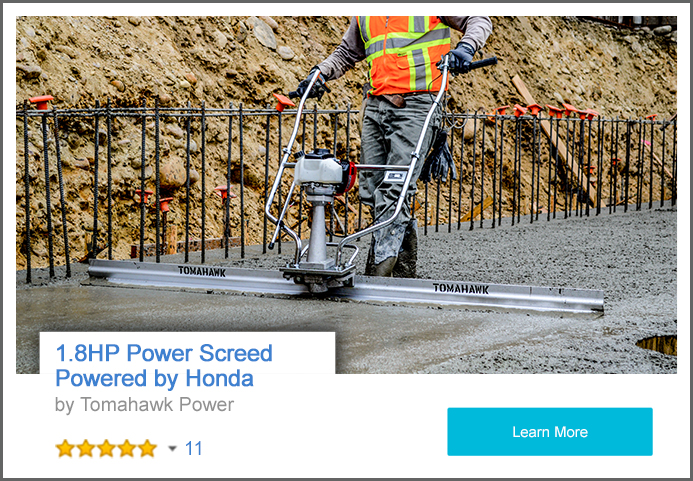Concrete work is notorious for being physically demanding, often leading to chronic back pain and other musculoskeletal disorders among contractors. The repetitive motion and the need to maintain awkward positions for extended periods can take a toll on the body. However, the advent of power screeds has brought about a significant shift, offering not just efficiency and speed but also notable ergonomic benefits. This article delves into the ergonomic advantages of using power screeds and shares personal stories from contractors who have seen marked improvements in their health and productivity.
The Health Costs of Manual Screeding: A Closer Look
Traditional manual screeding methods require workers to bend over for long periods, pulling a screed board across wet concrete to level it. This method not only is time-consuming and less efficient but also puts a considerable strain on the back, shoulders, and knees. Over time, this can lead to serious health issues, including chronic back pain, which is one of the most common complaints among concrete contractors. The physical toll of manual screeding can not only affect the quality of life of the workers but also their ability to work and earn a living.
Ergonomic Advantages of Power Screeds for Concrete Contractors
Switching to power screeds brings several ergonomic benefits that can significantly reduce the risk of injury and improve workers' overall health. Here are some key ergonomic advantages:
- Reduced Physical Strain: Power screeds allow the operator to stand upright while screeding, drastically reducing the strain on the back, neck, and knees. This posture is more natural and less taxing on the body, especially over long periods.
- Increased Efficiency: With power screeds, contractors can cover more ground in less time, reducing the duration of physical exertion. This efficiency not only helps in completing projects faster but also minimizes the time workers spend in potentially harmful positions.
- Vibration Dampening: High-quality power screeds are designed to minimize hand-arm vibration, which can lead to conditions such as Hand-Arm Vibration Syndrome (HAVS). By absorbing much of the vibration, these tools protect workers from the risks associated with prolonged exposure to vibration.
- Adaptability: The ability to attach screed boards of various lengths to the power unit means that workers can adjust the tool to the project's specific needs without compromising their posture or safety. This adaptability ensures that the tool works for the operator, not the other way around.
Personal Stories: Contractors Who Have Improved Their Health and Productivity
Many contractors have experienced firsthand the benefits of switching to power screeds. One such story comes from a seasoned concrete contractor, who after years of battling with back pain from manual screeding, made the switch to a power screed. He reports, "Not only has my back pain significantly decreased, but my crew and I can complete projects much faster. It's a win-win."
Another contractor shared, "Using a power screed has been a game-changer for my business. My team is happier, healthier, and we're delivering better quality work. The clients have noticed the difference, and so have our bottom lines."
The transition from manual to power screeding in concrete work is not just about embracing new technology; it's about prioritizing the health and well-being of the workforce. The ergonomic benefits of using power screeds can lead to a healthier, more productive team capable of delivering higher quality work. As more contractors share their success stories, it becomes clear that power screeds are not just tools but investments in the future of the concrete industry and the people who drive its success. Embracing this technology means saying goodbye to back pain and welcoming a more efficient, healthier approach to concrete work.











